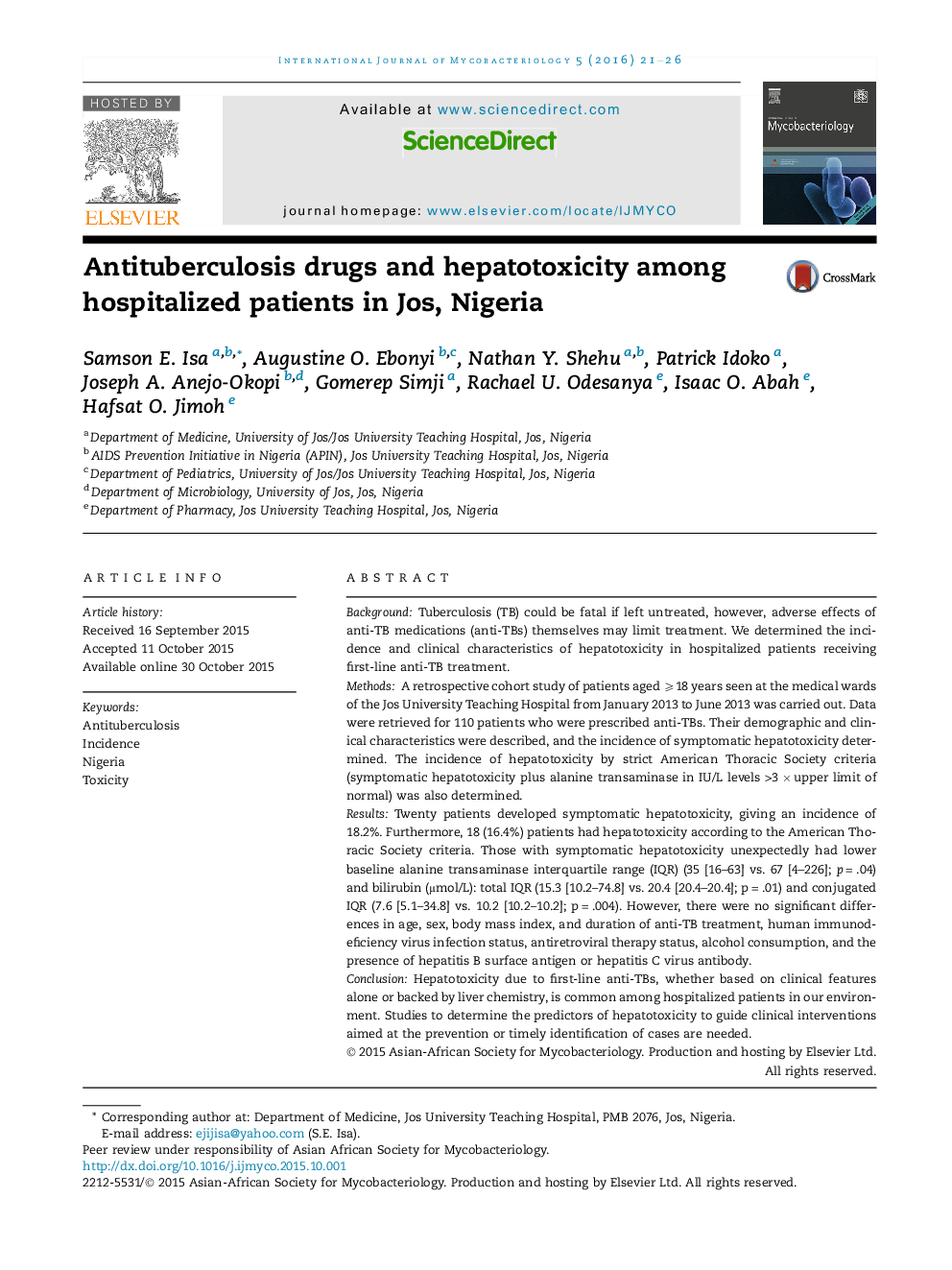| Article ID | Journal | Published Year | Pages | File Type |
|---|---|---|---|---|
| 3404986 | International Journal of Mycobacteriology | 2016 | 6 Pages |
BackgroundTuberculosis (TB) could be fatal if left untreated, however, adverse effects of anti-TB medications (anti-TBs) themselves may limit treatment. We determined the incidence and clinical characteristics of hepatotoxicity in hospitalized patients receiving first-line anti-TB treatment.MethodsA retrospective cohort study of patients aged ⩾18 years seen at the medical wards of the Jos University Teaching Hospital from January 2013 to June 2013 was carried out. Data were retrieved for 110 patients who were prescribed anti-TBs. Their demographic and clinical characteristics were described, and the incidence of symptomatic hepatotoxicity determined. The incidence of hepatotoxicity by strict American Thoracic Society criteria (symptomatic hepatotoxicity plus alanine transaminase in IU/L levels >3 × upper limit of normal) was also determined.ResultsTwenty patients developed symptomatic hepatotoxicity, giving an incidence of 18.2%. Furthermore, 18 (16.4%) patients had hepatotoxicity according to the American Thoracic Society criteria. Those with symptomatic hepatotoxicity unexpectedly had lower baseline alanine transaminase interquartile range (IQR) (35 [16–63] vs. 67 [4–226]; p = .04) and bilirubin (μmol/L): total IQR (15.3 [10.2–74.8] vs. 20.4 [20.4–20.4]; p = .01) and conjugated IQR (7.6 [5.1–34.8] vs. 10.2 [10.2–10.2]; p = .004). However, there were no significant differences in age, sex, body mass index, and duration of anti-TB treatment, human immunodeficiency virus infection status, antiretroviral therapy status, alcohol consumption, and the presence of hepatitis B surface antigen or hepatitis C virus antibody.ConclusionHepatotoxicity due to first-line anti-TBs, whether based on clinical features alone or backed by liver chemistry, is common among hospitalized patients in our environment. Studies to determine the predictors of hepatotoxicity to guide clinical interventions aimed at the prevention or timely identification of cases are needed.
